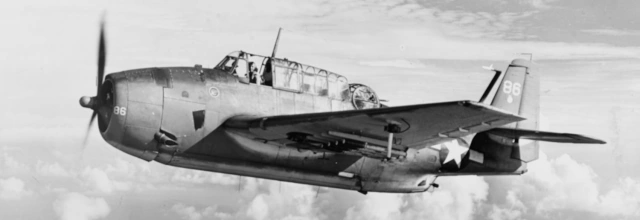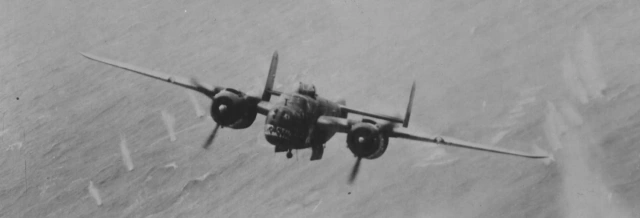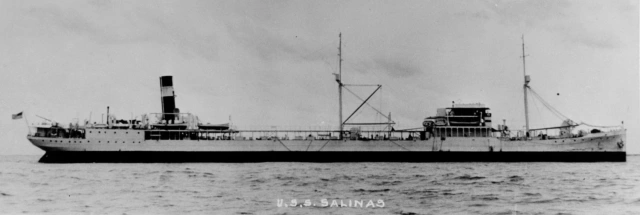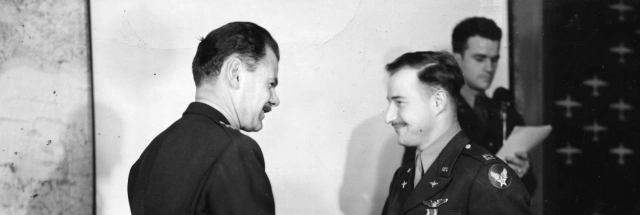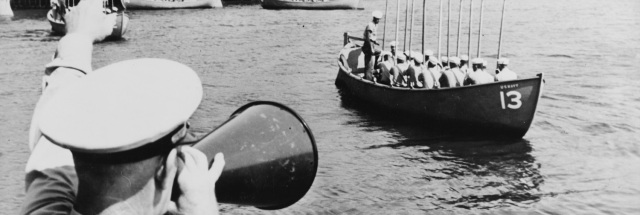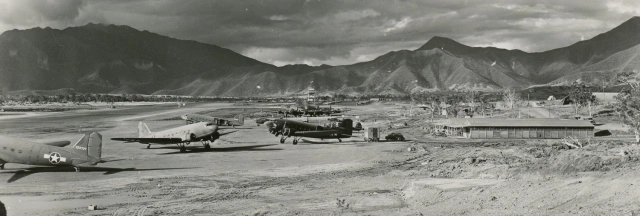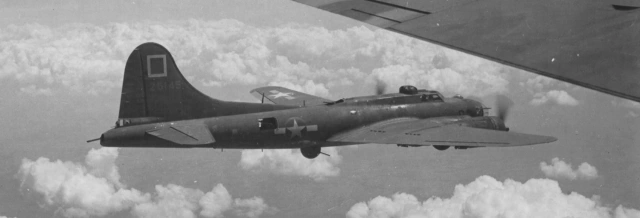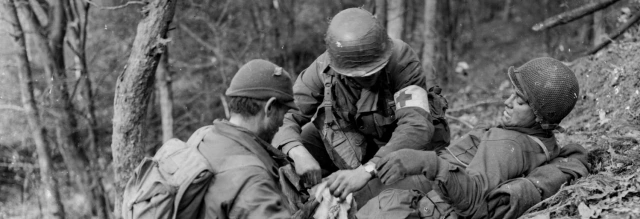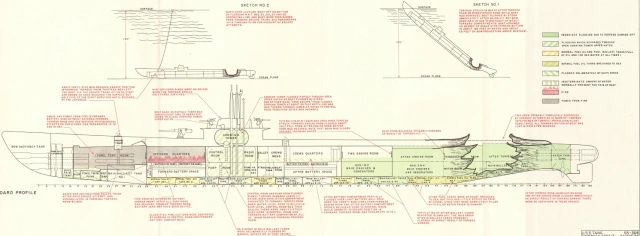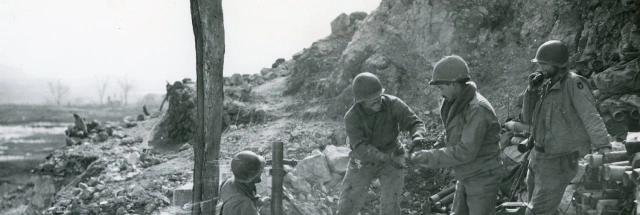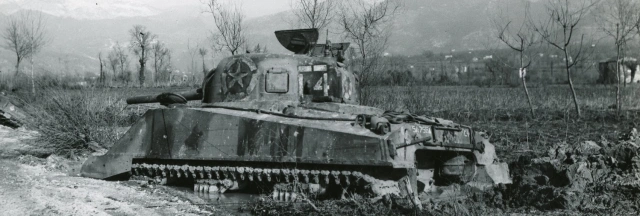| Residences | Civilian Occupation |
| Born in Connecticut, moved to Delaware as a child | Mechanic |
| Branch | Service Number |
| U.S. Army | 32167438 |
| Theater | Unit |
| European | Company “A,” 115th Infantry Regiment, 29th Infantry Division |
| Awards | Campaigns/Battles |
| Purple Heart | Normandy |
Early Life & Family
Walter Francis Johnson was born on November 7, 1918, in New Haven County, Connecticut, likely in Branford. He was the eldest son of Frank L. Johnson (1887–1963) and Marion Lewis Johnson (née Patrick, 1895–1979). His parents were both immigrants who had become naturalized U.S. citizens. His mother was born in Scotland and his father in Sweden. They married in Branford on February 11, 1916.
The family was recorded on the census on January 13 or 14, 1920, living in Branford. Johnson’s father was described as operating a farm. Later that year, on September 21, 1920, the Johnsons welcomed another son, Henry Warren Johnson (1920–1996). The Johnson family subsequently moved to Kent County, Delaware, where they were recorded on the next census on April 25, 1930. Another son, Norman Lewis Johnson (1930–2000), was born in Dover, Delaware.
An August 3, 1944, article in The Smyrna Times stated that Johnson “attended the Cheswold and Dover schools.” Census records and his enlistment data card indicate that he dropped out of school after completing the 8th grade.
By the time of the next census on May 6, 1940, Johnson was working as a farmhand. An August 3, 1944 Journal-Every Evening article stated that Johnson “had lived for many years in the Cheswold – Kenton area. He was employed at Rothwell’s Garage, Smyrna, at the time of his induction.”
When he registered for the draft on October 16, 1940, Johnson stated that he was unemployed and living in Cheswold. The registrar described him as standing about five feet, 10 inches tall and weighing 150 lbs., with brown hair and hazel eyes. According to the Individual Military Service Record that his mother submitted to the State of Delaware Public Archives Commission in 1946, Johnson worked in both farming and trucking. His enlistment data card gave his occupation as “Semiskilled mechanics and repairmen, motor vehicles.”
Military Training
Johnson was drafted before the U.S. entered World War II. His enlistment data card recorded that he was inducted in Trenton, New Jersey, on August 8, 1941. His mother stated that he was inducted that same day in Fort Dix, New Jersey. Either way, Fort Dix was probably the first base he was stationed at, since most Delawareans who entered the U.S. Army during World War II spent a few days there at the beginning of their military careers. His mother’s statement indicated that Private Johnson attended basic training at Camp Croft, South Carolina, then joined Company “A,” 115th Infantry Regiment, 29th Division at Fort George G. Meade, Maryland, in December 1941.
The 29th Division (known as the 29th Infantry Division after March 12, 1942) had originally been composed of National Guardsmen, primarily from Maryland and Virginia. Company “A,” of the 115th Infantry Regiment had been based in Frederick, Maryland. The division entered federal service on February 3, 1941, and was initially stationed at Fort George G. Meade, Maryland. Many of the original guardsmen remained even as men from other parts of the country (like Johnson) filled out the division’s ranks. Johnson was promoted to private 1st class on an unknown date.
According to Johnson’s mother, he was a machine gunner. If so, he would have been in the company weapons platoon, which had three mortar and two light machine gun sections. Each section had a section leader, gunner, assistant gunner, and two ammunition bearers.
The division moved several times during Johnson’s first year in the unit. In April 1942, the 29th Infantry Division moved to the A.P. Hill Military Reservation (later renamed Fort A.P. Hill). The unit traveled further south in July to Carolina Maneuver Area and then Camp Blanding, Florida, in August. In September 1942, the 115th Infantry Regiment moved up to Camp Kilmer, New Jersey, and shipped out for the United Kingdom in early October aboard the R.M.S. Queen Elizabeth. The regiment arrived in Greenock, Scotland, on October 11, 1942.
The 29th Infantry Division’s arrival in the United Kingdom was part of a buildup of hundreds of thousands of Allied soldiers in preparation for the invasion of France. The division spent the next 20 months in the U.K.—most of that time in southern England—training, including practice exercises at Slapton Sands.

Combat in Normandy
In his book, Beyond the Beachhead: The 29th Infantry Division in Normandy, Joseph Balkoski wrote:
On Omaha, four critical draws, or gullies, led inland from the high water mark. Since the intervening bluffs were so steep, these draws were the only paths by which vehicles could go inland. Each draw was guarded by a Stützpunkt (strongpoint), consisting of a group of mutually supportive resistance nests.
Company “A” boarded a Landing Craft, Infantry, U.S.S. LCI-618 at Plymouth Harbor, England. The 115th Infantry Regiment shipped out for Normandy on the night of June 5, 1944. The following morning, at H-Hour (0630) on D-Day, another regiment, the 116th Infantry, led the 29th Infantry Division in the landings on Omaha. The 116th sustained devastating casualties in the process. Private 1st Class Johnson’s 115th Infantry Regiment landed about four hours later. Company “A” and the rest of 1st Battalion were originally supposed to land at the sector designated Easy Green.
Balkoski wrote that “the LCIs were extremely difficult to navigate in obstructed waters, and without a clearly defined path through the German obstacles, they were likely to hit a mine at high tide.” Finding that their planned sector had not been cleared, the 115th’s landing craft “were ordered to head for the 1st Division zone, a mile to the east.”
After landing, the 115th Infantry Regiment advanced towards Saint-Laurent-sur-Mer. Despite enemy artillery, sniper fire, and minefields, the 115th Infantry Regiment’s casualties were far lighter than those of units leading the assault.
The regimental after action report stated:
The 115th Infantry landed at 1025 hours, with the 1st and 2nd Battalions abreast on FOX GREEN beach, about 1000 yards east of that part of the beach on which it was intended to land. The 2nd Battalion on the right crossed the beach and started up the cliff, making slow progress due to mines. The progress of the 1st Battalion on the left was faster. It pushed inland to the south of ST. LAURENT, reaching there about dark.
Difficult as it was, D-Day was just the first day of a grueling campaign, one where the terrain favored the defenders. Balkoski wrote that:
[T]he 115th was frequently held up by enemy delaying tactics. Wily German snipers and machine gun teams had carefully selected ambush positions in almost every hedgerow and farm house behind the beach. […] A hedgerow was a ready-made fortress behind which troops were invulnerable to small arms fire. […] In combat, it proved nearly impossible for the 29ers to tell whether a hedgerow was held by a Germany company or just a single sniper, or perhaps by no one at all.
Private 1st Class Johnson’s battalion suffered significant casualties trying to cross the river Elle on June 12, 1944, but he was not hit. German reinforcements spoiled the 29th Infantry Division’s drive south to the key city of Saint-Lô, and the division settled in to regroup on June 18, 1944.
A summary of Johnson’s last letter home to his family, dated June 28, 1944, appeared in a pair of articles printed in newspapers back in Delaware. According to his company’s morning reports, his unit would have been about one mile east of La Fossardière at the time. An August 4, 1944, article in Journal-Every Evening stated that Johnson had written that he “had two ‘close calls’ after which he had felt certain that from there on all would be well with him.” An August 8, 1944, article in that same paper added that in his letter, Johnson “described the farms of France, the pastures, fields and cattle and said that his dearest wish was to have a farm of his own upon his return.”
In their book, The 115th Infantry Regiment in World War II, Joseph Binkoski and Arthur Plaut wrote that on June 30, 1944, elements of the 3rd Armored Division advanced south but “the enemy stubbornly resisted the efforts to drive him from the high ground around La Forge.” That afternoon, the 115th Infantry Regiment took over the effort. 1st and 3rd Battalions led the assault, with 2nd Battalion in reserve. Binkoski and Plaut continued:
The 1st Battalion began moving toward La Forge about 1700 [hours] and completed taking over the sector by 1930. The battalion immediately began digging in. In the process, Company A was counterattacked, principally by fire. The attack was driven off and the enemy withdrew to the woods west of Belle Fontaine.
Binkoski and Plaut wrote that the following day, July 1, 1944,
1st Battalion launched a limited attack at 0930 in an attempt to gain control of Hill 115, along the main highway running into St. Lô. The Germans themselves launched a counterattack at the same time and in the clash that followed, both sides pulled back to their original positions. Enemy mortar fire was particularly vicious and caused numerous casualties. This attack was the final offensive action in which the Regiment engaged for a ten-day period.
Private 1st Class Johnson was reported as killed in action near La Forge on July 2, 1944. If accurate, his death occurred during the period in which his battalion was holding the line during a temporary pause in the advance on Saint-Lô. According to a hospital admission card filled out under his service number, Private 1st Class Johnson was struck in the thorax by artillery fragments and killed.
American forces captured Saint-Lô on July 18, 1944. One week later, the Allies launched Operation Cobra, finally breaking out of Normandy. German crumbled and they lost some 60,000 soldiers and a large quantity of equipment to encirclement in the Falaise pocket. Despite the rapid Allied advanced across France in pursuit of the retreating Germans during August 1944, months of heavy fighting remained before final victory in Europe in May 1945.
Private 1st Class Johnson was buried in a temporary cemetery in France. After the war, his family requested that his body be repatriated to the United States. After services at the Matthews Funeral Home in Smyrna on April 24, 1948, Johnson was buried in the Odd Fellows Cemetery nearby. He is honored on the World War II memorial in Dover and at Veterans Memorial Park in New Castle.
Notes
Birthplace
His mother’s statement indicates that Johnson was born in Branford, which is located in New Haven County, Connecticut. His draft card gave his place of birth as New Haven, but it is unclear if that referred to the city or county, since the draft card specified that either could be listed.
Ribbons
There are two ribbons on Johnson’s uniform in the photo of him in the Delaware Public Archives displayed at the top of the page. The photo, though undated, seems to have been taken when he was a private. Since he was in the Army prior to Pearl Harbor, Johnson would have earned the American Defense Service Medal. It is possible that the other is the Good Conduct Medal.
Wounded on D-Day?
An August 4, 1944 Journal-Every Evening article reported that his “parents were aware he had been wounded on D-Day through a photography of stretcher-borne casualties which appeared in a newspaper[.] They later obtained a photograph from which the newspaper cut was made and its sharper details proved the identification.”
Most likely, that was a case of his parents misidentifying their son in the newspaper photograph. There is no evidence that Johnson was wounded at any time prior to his death on July 2, 1944: Company “A,” 115th Infantry Regiment morning reports don’t mention Private 1st Class Johnson being wounded, nor is there any sign of a hospital admission card under his service number prior to July 1944. Though it’s not inconceivable that a minor wound could go undocumented, it is unlikely that one severe enough for him to end up being photographed on a stretcher would. In addition, the same newspaper article stated that “His only mention of wounds was his reference to ‘two close calls.’”
La Forge
La Forge is a small geographic area (referred to as a lieu-dit) located south of La Fossardière and north of La Luzerne, near the present-day intersection of D6 and D448. It appears that some maps have the area labeled as Les Forges.
Acknowledgments
Special thanks to the Johnson family and to the Delaware Public Archives for the use of their photos of Private 1st Class Johnson.
Bibliography
“115th Infantry Regiment After Action Report – 29th Infantry Division – June 1944 – Battle of Normandy.” D-Day Overlord website. https://www.dday-overlord.com/en/battle-of-normandy/after-action-reports/29th-infantry/115th-infantry-regiment
Applications for Headstones, compiled 1/1/1925–6/30/1970, documenting the period c. 1776–1970. Record Group 92, Records of the Office of the Quartermaster General, 1774–1985. National Archives at Washington, D.C. https://www.ancestry.com/imageviewer/collections/2375/images/40050_2421401755_0406-02336
Balkoski, Joseph. Beyond the Beachhead: The 29th Infantry Division in Normandy. Revised ed. Stackpole Books, 2005.
Balkoski, Joseph. Omaha Beach: D-Day, June 6, 1944. Stackpole Books, 2004.
Binkoski, Joseph and Plaut, Arthur. The 115th Infantry Regiment in World War II. Infantry Journal Press, 1948. https://www.fold3.com/image/676386616
“Deaths.” Wilmington Morning News, April 24, 1948. Pg. 4. https://www.newspapers.com/clip/82653936/johnson-funeral-2/
“Funeral Services Set for Cheswold Veteran.” Wilmington Morning News, April 23, 1948. Pg. 25. https://www.newspapers.com/clip/82653694/johnson-funeral/
Johnson, Marion L. Walter Francis Johnson Individual Military Service Record, September 28, 1946. Record Group 1325-003-053, Record of Delawareans Who Died in World War II. Delaware Public Archives, Dover, Delaware. https://cdm16397.contentdm.oclc.org/digital/collection/p15323coll6/id/19407
“Kin of Dead Dover Soldier Hears He Had Two Close Calls Before.” Journal-Every Evening, August 4, 1944. Pg. 4. https://www.newspapers.com/clip/81381177/walter-f-johnson-kia/
Morning reports for Company “A,” 115th Infantry Regiment. June and July 1944. National Personnel Records Center, St. Louis, Missouri.
“PFC Walter Francis Johnson.” Find a Grave. https://www.findagrave.com/memorial/51329169/walter-francis-johnson
“Smyrna Youth Killed in France, 3 Other State Soldiers Wounded.” Journal-Every Evening, August 3, 1944. Pg. 2. https://www.newspapers.com/clip/81384491/walter-johnson-killed/
Stanton, Shelby L. World War II Order of Battle: An Encyclopedic Reference to U.S. Army Ground Forces from Battalion through Division 1939–1946. Revised ed. Stackpole Books, 2006.
“Table of Organization and Equipment No. 7-17: Infantry Rifle Company.” War Department, February 26, 1944. Military Research Service website. http://www.militaryresearch.org/7-17%2026Feb44.pdf
“Two Delaware Soldiers Give Lives Overseas.” Journal-Every Evening, August 8, 1944. Pg. 1 and 15. https://www.newspapers.com/clip/81384559/johnson-letter/
“Two Smyrna Soldiers Killed in Normandy Within 3 Days.” The Smyrna Times, August 3, 1944. Pg. 1. Courtesy of Danny E. Waite.
United States of America, Bureau of the Census. Fourteenth Census of the United States, 1920. National Archives at Washington, D.C. https://www.ancestry.com/imageviewer/collections/6061/images/4294458-00952
United States of America, Bureau of the Census. Fifteenth Census of the United States, 1930. National Archives at Washington, D.C. https://www.ancestry.com/imageviewer/collections/6224/images/4531890_00273
U.S. WWII Hospital Admission Card Files, 1942-1954. Record Group 112, Records of the Office of the Surgeon General (Army), 1775–1994. National Archives at College Park, Maryland. https://www.fold3.com/record/701458495/johnson-walter-f-us-wwii-hospital-admission-card-files-1942-1954, https://www.fold3.com/record/704709477/johnson-walter-f-us-wwii-hospital-admission-card-files-1942-1954
World War II Army Enlistment Records. Record Group 64, Records of the National Archives and Records Administration. National Archives at College Park, Maryland. https://aad.archives.gov/aad/record-detail.jsp?dt=893&mtch=1&cat=all&tf=F&q=32167438&bc=&rpp=10&pg=1&rid=2814028
WWII Draft Registration Cards for Delaware, 10/16/1940–3/31/1947. Record Group 47, Records of the Selective Service System. National Archives at St. Louis, Missouri. https://www.ancestry.com/imageviewer/collections/2238/images/44003_06_00004-01902, https://www.ancestry.com/imageviewer/collections/2238/images/44003_06_00004-01257
Last updated on July 16, 2022
More stories of World War II fallen:
To have new profiles of fallen soldiers delivered to your inbox, please subscribe below.






